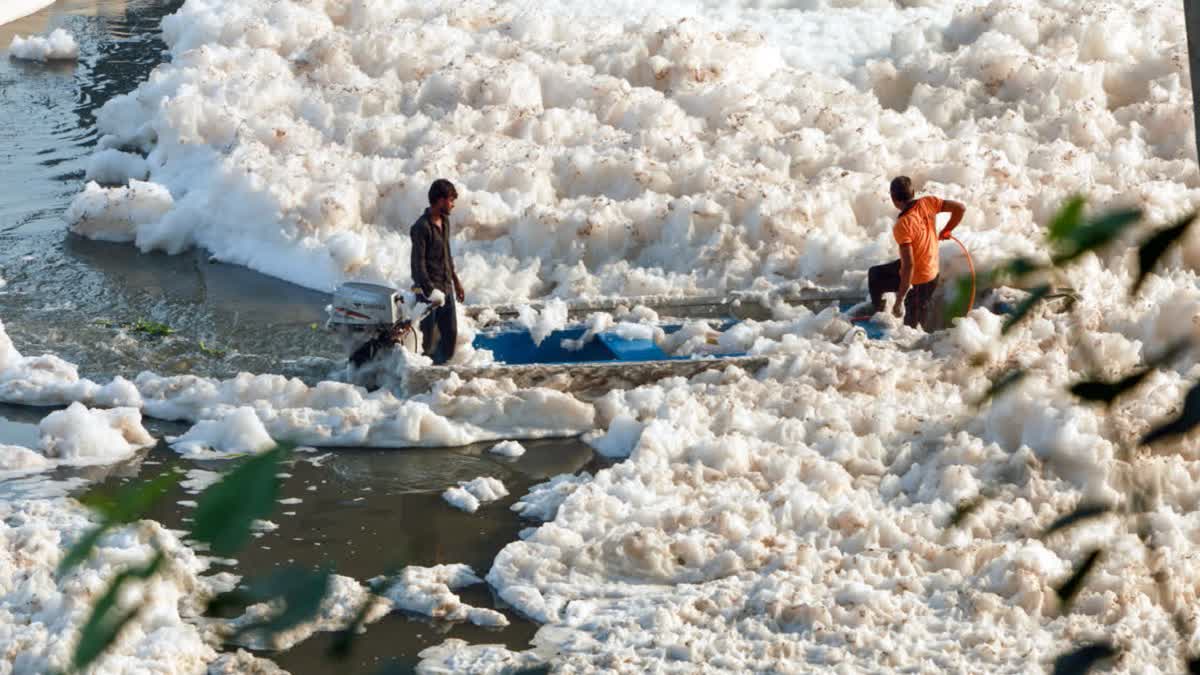New Delhi: The celebrations of the Chhath festival have been overshadowed by the severe pollution of the Yamuna River as its surface is covered with thick layers of toxic foam. Experts say the unusual occurrence poses serious health hazards to people, especially devotees who plan to take holy baths as part of the ritual.
According to experts, the pollution in the Yamuna waters has "touched alarming levels" as it crossed 650 ppm.
“Normal bathing water is considered clean at 300 ppm, while drinkable water is around 140 ppm. However, the pollution levels of Yamuna water at present make it unsafe and unfit for any use,” pollution expert Vijay Pratap Dubey told ETV Bharat.

"Such water is considered toxic and poses serious health risks to all those who come into its contact,” he said.
He also warned of serious skin-related diseases and other health problems for the Chhath devotees.
On Thursday, when people began the Chhath festival by offering Arghya to the setting sun, the water of Yamuna flowing near Okhla Barrage in Noida was overwhelmed with toxic white foam on the surface.
#WATCH | Delhi: Thick toxic foam seen floating on the Yamuna River in Kalindi Kunj, as pollution level in the river remains high.
— ANI (@ANI) November 7, 2024
(Drone visuals shot around 7:45 am) pic.twitter.com/hldyMm4PZA
Delhi NCR Turns Into Gas Chamber
Meanwhile, official figures indicated that Delhi NCR's air quality turned worse following Diwali. The Air Quality Index (AQI) has crossed the 400 mark, which means breathing in this air poses serious health risks to residents, especially those with pre-existing respiratory conditions.
Most Polluted Areas
As per the AQI figures, some of the most polluted areas in Delhi NCR include Anand Vihar with AQI 426, Ashok Vihar (417), Bawana (415), Jahangirpuri (425), Mundka (415), and Rohini (406).
Delhi: A thick layer of smog has enveloped the city as pollution levels continue to rise
— IANS (@ians_india) November 7, 2024
(Visuals from Shalimar Bagh) pic.twitter.com/rf1KaD7RgJ
AQI Levels
When the AQI is 0-50, it is considered in the ‘good’ category: 51-100 is 'satisfactory, 101-200 is 'moderate', 201-300 is ‘poor’, 301-400 is 'very poor’, 400-500 is severe, and an Air Quality Index above 500 is considered ‘extremely severe’.
According to experts, fine particles present in the air (PM matter less than 10), ozone, sulphur dioxide, nitric dioxide, carbon monoxide, and dioxide can all cause breathing problems.
Read More



